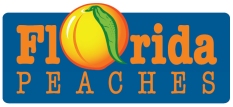March 1, 2012
Well, this year has been a tough one already for those in Northern and North Central Florida in the peach business. On the night of February 12th, our orchard at the Plant Sciences Research and Education Unit in Citra, FL experienced an advective freeze. Remember those? We haven’t had a windy freeze in a while – definitely in over 3 years. The final temperature was about 25°F, with steady 15 mph gusts. The water was turned on about 3 am, as a break came in the wind; however the wind picked back up in the morning, effectively destroying any protection that we tried to put out with our ice loads.
We had pretty good ice formation, with much of our wood covered in ice. Our irrigation for frost protection is set up on 20 x 20 spacing with 8 foot PVC pipes and brass impact overhead sprinklers.
A few heartbreaking pictures:

February, 2012
These were ‘Flordaprince’ on the left, and ‘UFSun’ on the right. The only difference is that the ‘Flordaprince’ was pruned, while the ‘UFSun’ had not been pruned . This resulted in severe limb breakage, with some of the trees only having one remaining scaffold. We had to pull two younger ‘UFSun’ trees.
After the ice melted off, we noticed that many of the flower petals were brown and freeze damaged; even the flowers that were at a “pink bud” stage had started to brown. When we cut through the flower, the pistil on many of these flowers were dead.
As the picture shows, during the night we had enough ice formation to fully encase the flowers and the buds – and the ice was fairly clear, meaning that the ice formed quickly without any air bubbles. Air bubbles could potentially affect the insulation factor of the ice, and reduce the effectiveness of the ice formation.
This tree on the left ended up with some of the ice that had air bubbles in it, but the full effect of the ice formation was hampered by the steady winds over 10 mph, gusting to 15 mph throughout the night.
About five days after the freeze, I went through to check what fruit was alive or dead. Fruit where the embryo was alive were green throughout, with a clear pit forming, while those fruit that were dead were brown, including the surrounding pit tissue (see below). While most of the time our freezes are radiative, we had a one-two punch here in Northern Central Florida, with an advective freeze on the night of the 12th, and a radiative freeze on the night of the 13th.

A number of researchers and growers around the country are looking at alternatives to combat these freeze situations, including using tunnels during the frost season and even wind machines. Although wind machines were once used unsuccessfully in the citrus industry during the major freezes in the 80s, the technology has advanced with better engines, blade design, and greater effective area, reducing the number required per farm. In addition, the use of a wind machine or other frost protection method like tunnels can reduce the water utlized during freeze events.
Here’s to hoping for a better year next year for our research and breeding program!




